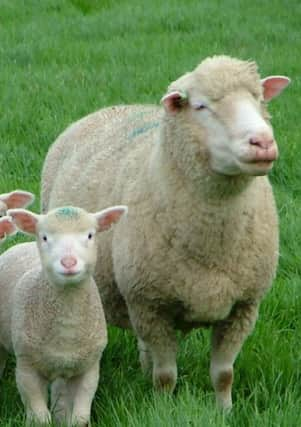Two ‘mad sheep’ found; one was destined for dinner plate


Farms Minister Michelle O’Neill said: “Since 2010 there have been two cases of Scrapie in the north of Ireland.
“The first was a case of atypical Scrapie found in a human consumption sheep, sampled at a slaughterhouse, in November 2011.
Advertisement
Hide AdAdvertisement
Hide Ad“The second was a case of atypical Scrapie found in a fallen sheep, sampled at a rendering establishment, in February 2012.”
The Department of Agriculture and Rural Development (DARD) is obliged to monitor instances of transmissible spongiform encephalopathy (TSE) in sheep and cattle under EU rules. The most common TSE in cattle is Bovine spongiform encephalopathy (BSE).
According to the World Health Organisation (WHO) the human disease “variant Creutzfeldt-Jakob disease” (vCJD) is believed to be a zoonotic disease caused by the BSE agent.
Scrapie is an instance of TSE in sheep and whilst potentially economically damaging to the agriculture industry and endemic in some sheep and goat flocks in Europe and elswhere, it is not known to pose any risk to humans.
Advertisement
Hide AdAdvertisement
Hide AdOther TSEs include Chronic Wasting Disease (CWD) in elk and deer, Transmissible Mink Encephalopathy (TME) in mink and Feline Spongiform Encephalopathy (FSE) in cats.
No human case has been linked so far to these animal diseases.
There have even been instances of a human TSE called Kuru, which was transmitted by ritualistic cannibalism amongst the Fore people in Papua New Guinea, but which is currently much rarer than before.